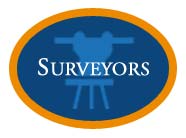This annual Point of Beginning study provides a snapshot of who is working in the surveying and mapping industry, how they work, and why they stay in the profession.
Each year, the surveying industry website Point of Beginning (POB) and BNP Market Research send questionnaires to POB subscribers to take the pulse of the industry as well as to gain some insight into the market. This year 262 professionals took part in the 2015 Salary and Benefit Study, which has a margin of error five percent at the 90 percent confidence level. What are the highlights of this study and what insights does it provide?
Who Works in the Surveying Industry?
The majority of surveyors who responded to the survey ranged in age from 36 to 56 plus, although the percentage of professionals age 56 and over declined in 2015 (39 percent) from 2013 (46 percent). Since more than half of the surveyors in the 2014 study reported their incomes dropped due to a lack of business (56 percent) or the economy was slow (53 percent), those in the top age range may have opted to retire early. Even with the loss of seven percent of older surveyors between 2013 and 2015, 43 percent of the professionals reported they had 30 or more years of industry experience. While many states are just starting to require a college degree to obtain a surveyor license, 83 percent of respondents hold post-secondary degrees.
Do you think younger people will be attracted to a career in surveying as the industry becomes more high tech with the use of drones and robots?
How are Surveyors Working?
Only 17 percent of surveyors who participated in the POB reported they did not hold licenses. The majority of professionals possess credentials in one state while only 10 percent report they have licensure in three of more states. This suggests that most surveyors like do work their locally.
What are the advantages of keeping your business close to home?
What are the Advantages of Working as a Surveyor?
Compared to other industries, those working as surveyors enjoy exceptional employment stability, beneifts, and income growth.
- According to the 2015 POB study, 87 percent of surveyors reported their firm either maitained or increased the number of full time employees. This represents a 17 percent increase from 2013.
- In addition, 52 percent indicated their income increased from their previous year earnings and 63 percent reported earning a salary as opposed to hourly wages.
- The majority of respondents reported they earned more than $50,000 each year, while a little over half (51 percent) indicated they made $70,000 or more, and 11 percent had salaries of more than $100,000 annually.
- Compared to other industries, surveyors enjoy exceptional benefits, such as paid sick and vacation leave, continuing education, and health benefits.
With better than average pay, benefits, and job stability, do you think more people will become surveyors in the future? If not, why? If so, what effect will more surveyors have on the industry as a whole?






 We're more than just brokers. We're A/E specialists, delivering the right coverage and exceptional value and service to hundreds of design firms of all sizes. Of course we leverage the latest industry resources to provide you with coverage, risk management and contract review tailored to your practice. But we also remember the difference between simply billing clients and actually serving them. See for yourself. Contact us of a competitive quote on your professional liability insurance.
We're more than just brokers. We're A/E specialists, delivering the right coverage and exceptional value and service to hundreds of design firms of all sizes. Of course we leverage the latest industry resources to provide you with coverage, risk management and contract review tailored to your practice. But we also remember the difference between simply billing clients and actually serving them. See for yourself. Contact us of a competitive quote on your professional liability insurance.